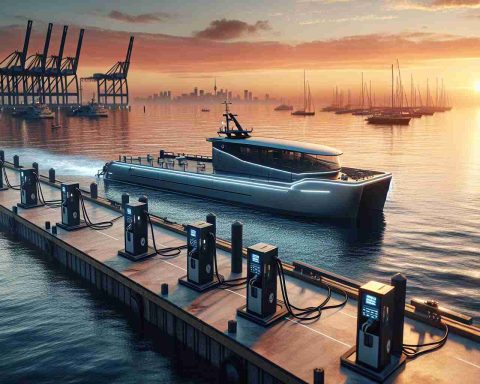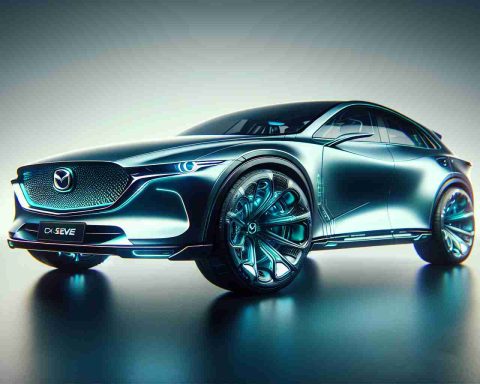- Ford Motor Co. faces significant financial challenges, including soaring warranty costs and a $1 billion asset write-down for a failed electric SUV project.
- Projected adjusted pretax income for the full year is between $7 billion and $8.5 billion, down from $10.2 billion the previous year.
- Losses in Ford’s electric vehicle segment, Model e, exceeded $5 billion in 2024, with a projected further loss of $5 billion to $5.5 billion this year.
- Traditional vehicle segments are also struggling, with expected profit declines in both the Ford Pro and Ford Blue divisions.
- Despite meeting some Wall Street expectations, Ford’s problematic outlook led to a 5.1% decline in stock value after hours.
Ford Motor Co. is navigating stormy financial waters, grappling with soaring warranty costs and faltering efforts to trim expenses. In a startling revelation for the July-September quarter, the automotive giant incurred a hefty $1 billion charge to write down assets tied to a scrapped three-row electric SUV. The company is forecasting a dip in earnings growth, projecting a full-year adjusted pretax income between $7 billion and $8.5 billion—significantly lower than last year’s $10.2 billion.
The company’s electric vehicle venture, aptly named Model e, has been a major contributor to these worrying figures, with losses surpassing $5 billion in 2024 as revenues plummeted by 35%. The pain doesn’t stop there; Ford anticipates further staggering losses in its EV division, projecting between $5 billion and $5.5 billion this year alone.
Even the traditional petrol and hybrid segments aren’t looking rosy. Ford Pro, the commercial vehicle segment, is expected to see profits shrink from $9.02 billion to between $7.5 billion and $8 billion. Meanwhile, Ford Blue is set to face a downturn as well.
Despite surpassing Wall Street’s estimates in its fourth-quarter results, the dire outlook spooked investors, leading to a 5.1% drop in after-hours trading. This news highlights a critical moment for Ford, as the iconic automaker struggles to align its ambitious electric future with the harsh realities of the market. The key takeaway? Ford’s future in electrification remains uncertain, and decision-makers are under immense pressure to steer the company back on course.
Ford’s Electric Future on the Brink: Will Innovation Save the Day?
Overview of Ford’s Financial Challenges
Ford Motor Co. is facing significant financial hurdles as it navigates through rising warranty costs and challenges in managing expenses. Recently, the company reported a staggering $1 billion asset write-down related to an abandoned three-row electric SUV project for the July-September quarter. This event has raised eyebrows and pointed to deeper issues within Ford’s operational and strategic frameworks.
The company’s forecast for adjusted pretax income has taken a hit, projecting a range of $7 billion to $8.5 billion for the full year, a sharp decline from the $10.2 billion it reported last year. In 2024 alone, losses in its electric vehicle (EV) segment, Model e, have exceeded $5 billion, reflecting a drop in revenues by 35%.
Recent Trends Impacting Ford’s Performance
1. Rising Costs and Reduced Earnings: The continued increase in warranty claims has created an unsustainable financial landscape for Ford. This has been compounded by the company’s struggles to cut costs effectively.
2. Electric Vehicle Losses: The financial strain is particularly evident in the EV sector, with projected losses in Model e expected to range between $5 billion and $5.5 billion. This highlights the difficulties Ford faces in transitioning to a fully electric lineup while maintaining profitability.
3. Commercial Segments Strain: The Ford Pro segment, which focuses on commercial vehicles, is projected to see profits decline from $9.02 billion to between $7.5 billion and $8 billion, indicating that not even their traditional markets are safe from the downward trend.
Important Questions
1. What strategic changes is Ford implementing to address its financial challenges?
Ford is focusing on refining its operational efficiencies, cutting unnecessary costs, and possibly reevaluating its EV strategies to align with market demands. They may also consider strategic partnerships to leverage resources and share technological advancements in EV development.
2. How will Ford’s challenges in the EV market impact its overall brand image?
If Ford continues to struggle financially and fails to meet consumer expectations in its EV offerings, it could tarnish its brand reputation as a leading innovator in the automotive industry. However, successful innovations and a committed turnaround strategy may still enhance its image as a resilient company embracing change.
3. What are the long-term implications of these financial struggles on Ford’s market positioning?
Long-term implications could include a diminished market share if Ford cannot rebound effectively from these financial difficulties. Competitors may gain ground in the EV space, leading to an increased challenge for Ford to regain its status as a primary player in the evolving automotive landscape.
Insights and Future Directions
Despite experiencing a decline in investor confidence, with a 5.1% drop in after-hours trading following the announcement of its financial outlook, Ford is at a critical juncture. Leadership will need to take decisive actions to not only stabilize financial performance but also reignite investor faith in their electric future. Continuous innovation in electrification technologies, coupled with a reevaluation of current market strategies, will be crucial.
As electric vehicle technology advances rapidly, Ford’s ability to adapt and provide compelling products at competitive prices will be vital in shaping its future in the market.
For further insights on Ford’s market strategies and developments, visit Ford Motor Co..















